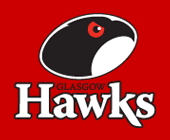|
The Scotsman Mon 5 Jun 2006
Evolution of rugby should continue with fewer players
JOHN BEATTIE
ARE there too many people on a rugby pitch now? I wonder.
It's interesting, but these two tests against South Africa mark a hundred years since we first played, as a country, against them, and the changes in the game have been nothing short of incredible in that time. It was a hundred years ago in 1906 that the Americans who were playing rugby brought the forward pass into their "American" game and so the game of "American" football took over from "rugby" football. In 1906 a try was worth three points, this, remember, taking over from the original position in rugby where, in 1871, a try was worthless and the conversion of the goal got you the points. Hence a try was so called because it let you "try" to get a goal.
Advert for The Scotsman Digital Archive
In 1906 a drop goal was worth four points, as was a thing called "goal from mark" which sounds what it is in that you could score a goal after a mark. Through the years rugby league set up on its own and cut down the number of players to 13 and jettisoned lineouts. A try in rugby union went up in value from three, to four and now five points, with - and here's a good little fact for you to keep handy on pub quiz nights - the then Scotland captain David Sole scoring the last ever four-point try in international rugby on Scotland's 1991 tour to Australia.
Back in 1906, the South Africans had only been playing rugby for seven years. Us? Well there are documents in the national library of Scotland banning what was a particularly rough kind of "fute ball" as played on open ground when locals would carry, kick, or blast a ball past rivals in mass participation, marauding, and dangerous games. The Act of Scottish parliament in 1424 under James 1st reads: "That na man play at the fute ball." Later golf was banned too.
By 1906 the game was beginning to be codified with judgments about being "off your side" and a points scoring system and all the rest of it. But what has always struck me about rugby is that if we fast forward some 50 years to the 1950s, but keep an eye on today, there appears to have been one constant, with everything else changing.
In the 1950s there were second row players who were six feet two. There were international props who were 14 stone. Even in my era, a big man stood at six feet five, and a very big centre would have been 14 stone. Now props can be 20 stone, second rows can be six feet six or seven and run like the wind, and big centres can be over 16 stone. All of them can run for longer and faster than at any time in the past.
And yet, one constant in amongst all that change has been the pitch. The pitches I played on are the same size as the ones the modern players run on. And keeping the pitch dimensions the same while keeping the same number of increasingly fit and powerful players afield can mean only one thing: Players will get bigger and bigger and the game will be more and more about power. If everybody is incredibly powerful and fit and organised, logic says that there must be less space, which means that space is contested, which means that power has an advantage.
Now, I don't want rugby to become some kind of freak show. It has to retain some element of open field excitement of the kind the Scots managed against the Barbarians last midweek. But I can't see rugby going any other way than more and more attritional.
The only way the game can change the shape of the players who have an advantage when playing it is to introduce more running into the game as it is of little advantage to be 23 stone and forced to run.
It is just not possible to increase the size of most rugby pitches. So, I genuinely think we are nearing the time when we have to take some players off the pitch. And I would remove the wing forwards. Now that, I think, would be a massive change in rugby union's history time line.
Oh, and in case you're wondering, no, I don't feel old enough to have a son in the national set up.
NOTE FROM ED --WHEN SCOTLAND PLAYED SOUTH AFRICA IN 1906 THE MATCH WAS HELD AT HAMPDEN.AND THE TEAM INCLUDED T.SLOANAND L.L GREIG FROM ACCIES AND G.M FREW FROM GLASGOW HSFP
This article was originally posted on 5-Jun-2006, 07:03 by Hugh Barrow.
Last updated by Hugh Barrow on 5-Jun-2006, 07:07.
|









